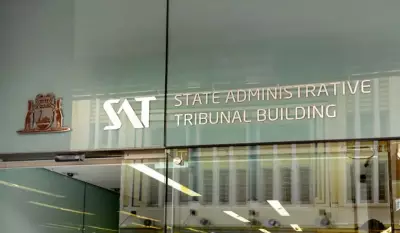
A damning review has exposed a critical staffing crisis within the ACT Ambulance Service (ACTAS), revealing that night shifts were understaffed a staggering 96 per cent of the time following the introduction of a new roster system.
The report, welcomed as an honest assessment, found the service plagued by relentless staff shortages and rising demand needs at least 83 more full-time paramedics to reach safe and effective staffing levels.
System Under Pressure
Ben Sweaney from the Transport Workers Union said the review demonstrates the service requires a significant injection of resources. While he praised the positive culture within ACTAS, he warned that the intense pressures, particularly on night shifts, are putting the entire system in jeopardy.
The new roster system, which began in April 2024, was the first major change since 1983. It was designed to better manage paramedic fatigue, moving away from a system of two 10-hour day shifts followed by two 14-hour night shifts.
The current model is unique in Australia, comprising a 10-hour morning shift, a 12-hour day shift, a 12-hour afternoon shift, and a 10-hour night shift.
Recruitment Falls Short
This new structure required more paramedics due to overlapping shifts. The plan was to bring 147 new paramedics into the service between January 2023 and August 2025.
However, this ambitious target was not met. Only 108 recruits joined, while 43 staff were lost through attrition during the same period. The review concluded that, despite two years of planning, ACTAS was not ready to implement the new roster.
It highlighted that critical enabling functions like workforce planning, the communications centre (ComCen), and education are critically under-resourced.
The 12-month review also exposed an ambulance utilisation rate of 68 per cent, meaning crews were busy and unavailable to respond to new incidents most of the time. This has directly led to increased response times and staff regularly finishing late, reducing the overall resilience of the emergency service.
Darren Neville, a liaison officer, described the difficult decisions communications staff now face, having to prioritise which life-threatening incidents to respond to first. He confirmed that understaffing has also created a leave crisis, where management cannot approve time off due to a lack of available staff.
New Stations in Jeopardy
Low-acuity cases, or urgent incidents that do not necessarily require an ambulance, were identified as the largest driver of demand pressure.
The staffing shortfall now casts doubt on the service's ability to man new stations. According to the union, it is uncertain whether ACTAS will have enough staff to run the Molonglo station scheduled to open in 2026.
Union members are planning to boycott the Molonglo station if the ACT government does not commit to funding at least 60 more positions before the next roster cycle. Mr Sweaney clarified that these needed resources are not all frontline paramedics, but a combination of support services to make the new station operational.
A Roster Worth Saving
Despite the challenges, the new roster has a significant silver lining: it has successfully achieved its primary goal of reducing fatigue. The review found it to be a big improvement, with over 70 per cent of the 140 surveyed staff reporting they felt less fatigued on their days off and had a better work-life balance.
Ben Sweaney described the roster as a big draw card that staff love, emphasising that the problem is not the system itself, but the lack of people to support it.
ACT Ambulance Service Chief Officer David Dutton celebrated this outcome, along with the inclusion of rostered time for professional development. He stated that the service has not been waiting for the report to address staffing, pointing to the recent arrival of 11 graduate paramedics and five interstate paramedics.
Mr Dutton expressed confidence in the ongoing recruitment drive, noting that over 200 people applied in the last round and more than 70 are being interviewed for roles starting in February 2026.
The Chief Officer, who started in his role in May, acknowledged that growing community demand is a nationwide issue and the new roster is not a silver bullet. His plan is to work through the report's 13 recommendations with the union and other stakeholders to build consensus on a path forward.





